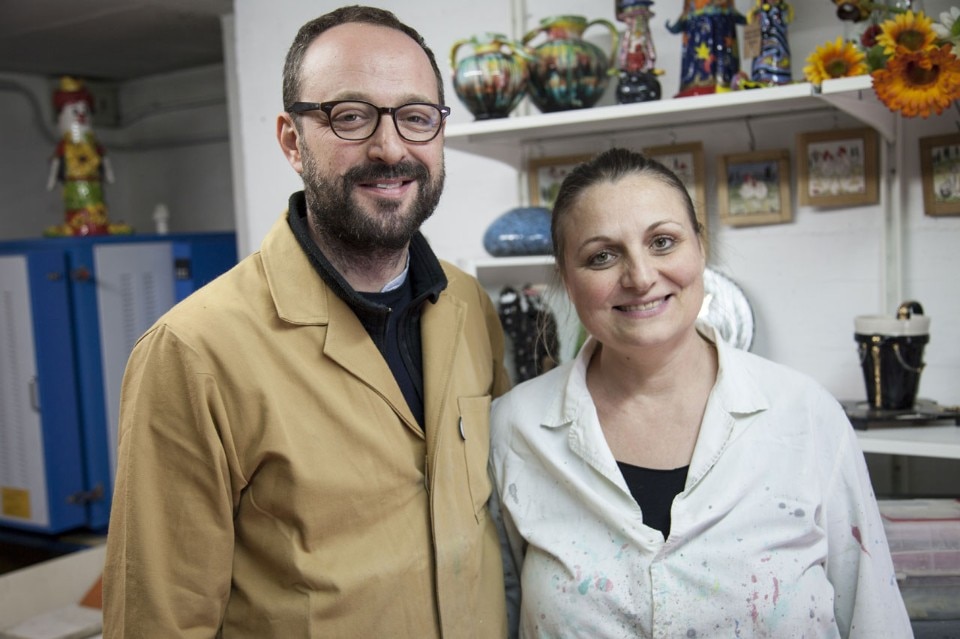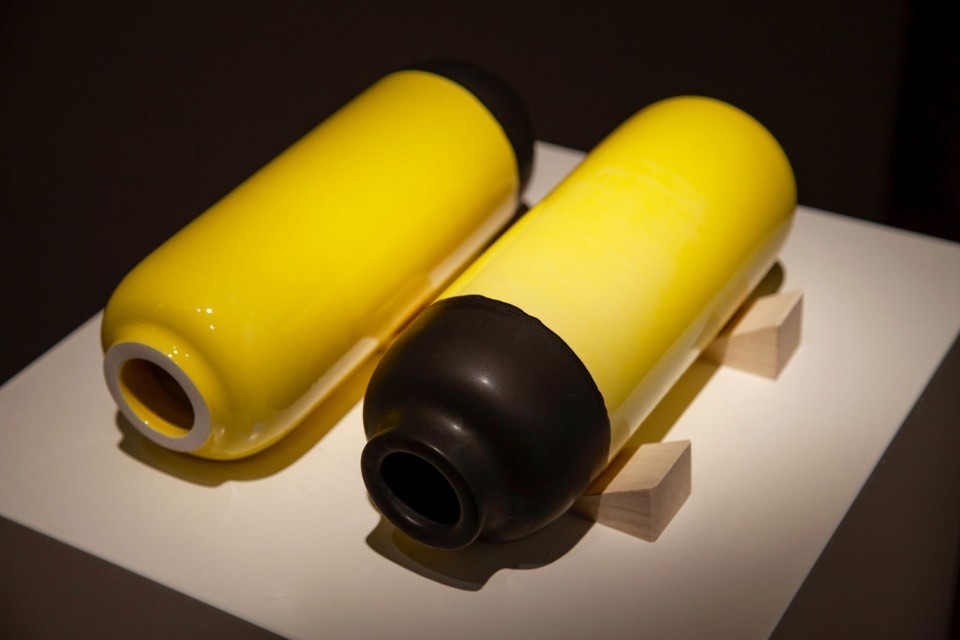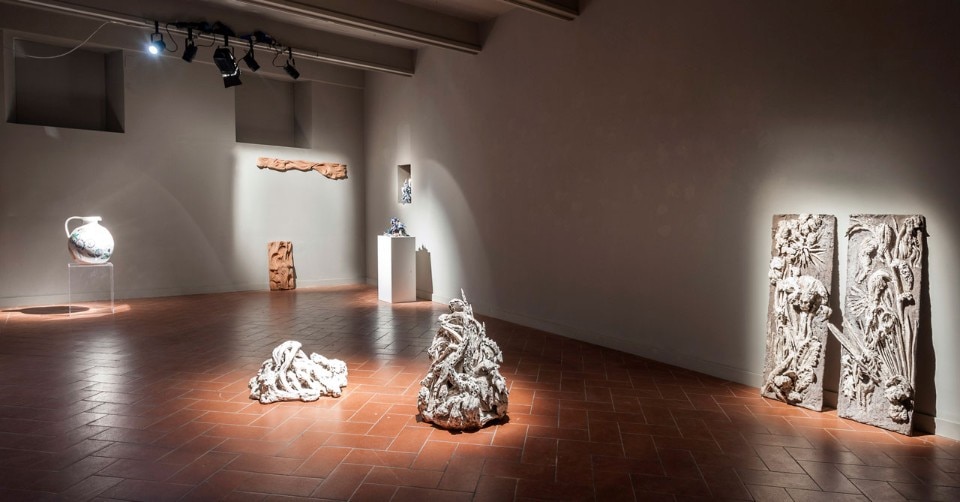Is ceramic a modern material? Judging by its presence at the latest art fairs it could be said, if nothing else, that the material’s in full swing. This current rehabilitation suggests a macroscopic trend in art – as well as in places more typical of design culture like fashion and design itself – for which assessing the object initially undergoes re-evaluating the craftsmanship. The topic had already been treated some years ago by Stefano Micelli who, especially as regards the scene in Italy – where savoir-faire also means business know-how – saw in artisanry the key to future economies. But we should not forget that this kind of skill cannot be improvised. Rather, it is handed down, along with the stories of lands.

 View gallery
View gallery
The vicissitudes of ceramics, in this regard, also jeopardize the geography of Italy itself, where each district has nurtured its most noteworthy specificity while remaining open to cross-fertilisation and contamination, something which in the 1400s took place in the famous “circulation of techniques and knowledge”. In fact, cross-fertilisation is the leitmotif that inspired the “Materia Montelupo” project, conceived by Matteo Zauli, son of the ceramic sculptor Carlo Zauli and founder of the museum dedicated to him in Faenza. In order to probe the modernity of ceramic, Matteo Zauli has invited nine contemporary artists to face – through multiple approaches, idiosyncrasies and personal experiences – the savoir-faire present in and around Florence.

 View gallery
View gallery
“Materia Montelupo” is a continuation of last year’s project, “Materia Prima”, which engaged grand masters including Ugo La Pietra and Bertozzi & Casoni in creating monumental urban installations in ceramic. This time, the Fondazione Montelupo hopes to develop a project for this area. “My work for the past 15 years has been focused on artist residencies,” Zauli explains, “to offer new perspectives, ideas and, therefore, new markets and opportunities”. So the artists Lorenza Boisi, Chiara Camoni, Maddalena Casadei, Ludovica Gioscia, Michele Guido, Alessandro Roma, Andrea Sala, Francesco Simeti and Nicola Toffolini were invited to collaborate this past autumn with local craft workshops (Ceramiche d’Arte Ammannati, Ceramica Artistica Bartoloni, Ceramiche d’Arte Dolfi di Ivana Antonini, Terrecotte Corradini e Rinaldi, Ceramiche Artistiche Giglio, La Galleria Nuove Forme d’Arte, Sergio Pilastri, Tuscany Art and Veronica Fabozzo Studio d’Arte). The results of this experience are on exhibit (until 15 February) at Palazzo Podestarile in Montelupo Fiorentino.

 View gallery
View gallery
The exhibition opens and closes with a vase – “an ancestral memory of the first object made by man” – but the process that led to its creation, in both cases, couldn’t be more different. At the start of the itinerary, the vases of Chiara Camoni were shaped while blindfolded, thus enhancing the tactile, sensual and physical experience of crafting clay. Instead, the show ends with the vases of Maddalena Casadei – who comes from industrial design and worked together with a lather – that challenge the surprises intrinsic to making works in ceramic and were conceived as design objects. “Numerous variations, ranging from sculpture to architectural elements, from common objects to design pieces, illustrate the great heterogeneity of the languages of ceramics”. What is particularly striking about the exhibition is the extraordinary variety of languages. In fact, all things considered, we could say that the legacy of the residence in Montelupo is precisely this: it’s a land of possibilities. Metaphorically speaking, we could think of a landscape architect who decides to leave his studio and literally get his hands dirty. While toiling in the dirt for an entire day, more focused on the effort than defining the ideal form, the plot of land takes on unexpected shapes. Some of the artists involved, when the exhibition opened, still had pieces in the kiln and other projects in their minds. The same holds for the workshop artisans, who found themselves down paths previously unbeaten.

 View gallery
View gallery
The small artisan shops from Montelupo, which, on average, have around six employees, create at full speed works that can today be found in Florence’s souvenir stores or on the American market. “I was able to achieve here what I couldn’t in other realities: a complete fusion between the work of an artist and that of an artisan,” states Zauli. In other words, a disconnect that could break the chain and inject new life blood by working on the tension between the simple everyday object and the artistic handmade piece, poised between two lands while remaining on that tightrope. For example, in the combined research of Ludovica Gioscia and Ceramica Artistica Bartoloni, the “reuse” form was experimented; Michele Guido with Ceramiche d’Arte Dolfi introduced “impure” impastos. Gio Ponti, who was the AD for Richard Ginori between 1923 and 1933, was convinced of the need to join art and industry in creating modern taste (how can we forget that Montelupo was the stage to the glorious collaboration between Ettore Sottsass and Ceramiche Bitossi?). But at the same time it is unquestionable that the charm of ceramic lies in its immediate comprehension and in its continuity with the past. The growing success of events such as the “Ceramic & Glass Fair” (at the Bohemian National Hall in New York, which in its 19th edition still attracts new collectors) is proof of this. “Besides, ceramics joins the latest technologies with intense physical labour on the part of the artist,” states Zauli, “and after years of conceptualising and dematerialising the work, today through the course and repetition of history, we reappropriate materials, and ceramics is the ideal medium”.
- Title:
- Materia Montelupo. Cantieri contemporanei in ceramica
- Curator:
- Matteo Zauli with Fondazione Museo della Ceramica di Montelupo
- Residencies:
- October – December 2017
- Opening dates:
- 2 December 2017 – 11 February 2018
- Venue:
- Palazzo Podestarile
- Address:
- via Giro delle Mura 43, Montelupo Fiorentino
































